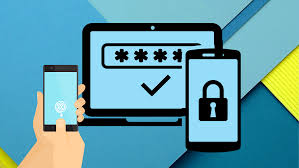
In today’s cybersecurity landscape, passwords alone are no longer sufficient to protect sensitive information. Cybercriminals constantly exploit weak or stolen passwords, making Multi-Factor Authentication (MFA) an essential security measure for businesses and individuals alike. MFA enhances security by requiring users to verify their identity using multiple authentication factors, significantly reducing the risk of unauthorized access. This blog explores the benefits of MFA and best practices for deploying it effectively across different systems and applications.
What is Multi-Factor Authentication (MFA)?
Multi-Factor Authentication (MFA) is a security mechanism that requires users to provide two or more authentication factors before gaining access to a system. These factors typically fall into three categories:
- Something You Know – A password, PIN, or security question.
- Something You Have – A smartphone, security token, or smart card.
- Something You Are – Biometrics such as fingerprints, facial recognition, or retina scans.
By combining these factors, MFA makes it significantly harder for cybercriminals to compromise accounts, even if one factor (e.g., a password) is stolen.
Benefits of MFA
1.Enhanced Security
MFA mitigates the risks associated with password-only authentication. Even if a hacker steals a password, they would still need the second factor to gain access.
2. Compliance with Regulatory Standards
Many industries, such as finance, healthcare, and government sectors, mandate MFA as part of their compliance requirements. Implementing MFA helps organizations adhere to regulations such as:
- General Data Protection Regulation (GDPR)
- Health Insurance Portability and Accountability Act (HIPAA)
- Payment Card Industry Data Security Standard (PCI DSS)
3. Reduced Risk of Phishing and Credential Theft
Phishing attacks are among the most common cyber threats. MFA ensures that even if an employee falls for a phishing scam and enters their password, the attacker cannot access the account without the additional authentication factor.
4. Improved User Confidence and Trust
Customers and employees feel more secure knowing their accounts are protected by MFA, increasing trust in the organization’s cybersecurity posture.
5. Protection Against Remote Attacks
With the rise of remote work and cloud-based applications, securing access to corporate systems is crucial. MFA ensures that only authorized users can log in, regardless of their location.
Best Practices for Deploying MFA
Choose the Right MFA Methods
Different authentication factors offer varying levels of security. Consider using a mix of the following based on risk levels:
- Authenticator apps (Google Authenticator, Microsoft Authenticator, etc.)
- Physical security keys (YubiKey, Titan Security Key, etc.)
- Biometric authentication (Face ID, Touch ID, etc.)
- SMS-based OTP (One-Time Password) – though less secure, still better than password-only authentication
2. Implement Adaptive MFA
Adaptive MFA (or Risk-Based Authentication) adjusts security measures based on contextual factors, such as:
- The user’s location
- The device being used
- Login behavior patterns
For example, if an employee logs in from a trusted device at their usual location, they may not need to enter an additional factor. However, if they attempt to log in from a new device in another country, MFA will require extra verification.
3. Educate Users on MFA Security
Implementing MFA is only effective if users understand its importance. Organizations should:
- Train employees on recognizing phishing attempts.
- Encourage the use of authenticator apps over SMS-based authentication (which can be intercepted).
- Reinforce secure login practices.
4. Ensure Seamless User Experience
While security is paramount, a complicated MFA process can frustrate users. Best practices include:
- Using single sign-on (SSO) combined with MFA to streamline logins.
- Allowing users to remember trusted devices for a limited time.
- Offering multiple authentication options to accommodate different user preferences.
5. Regularly Review and Update MFA Policies
Cyber threats evolve constantly, so organizations must:
- Conduct periodic security audits.
- Reassess MFA methods to align with the latest security standards.
- Enforce MFA policies for high-risk accounts, such as administrators and executives.
MFA Deployment Across Different Systems and Applications
1.Cloud and SaaS Applications
With businesses increasingly relying on cloud-based solutions, enforcing MFA for applications like Microsoft 365, Google Workspace, and AWS is crucial. Most cloud services offer built-in MFA options that organizations should enable by default.
2. VPN and Remote Access
Remote workers using VPNs should authenticate using MFA to prevent unauthorized access to company networks. Security tokens or biometrics provide an additional layer of security.
3. Customer-Facing Applications
For e-commerce, banking, and other customer-facing platforms, implementing MFA ensures user accounts remain secure. Businesses should:
- Provide an opt-in MFA feature for customers.
- Use push notifications or OTP-based authentication for login verification.
4. Privileged Accounts and Admin Access
High-privilege accounts are prime targets for attackers. MFA should be mandatory for:
- IT administrators
- System and database administrators
- Executives handling sensitive data
Multi-Factor Authentication is a critical defense against cyber threats. By implementing MFA correctly, organizations can significantly reduce the risk of data breaches, meet compliance requirements, and enhance overall security. However, MFA should be deployed thoughtfully, balancing security with user experience. As cyber threats continue to evolve, businesses must stay proactive in strengthening authentication measures to protect sensitive information and maintain trust with their users.